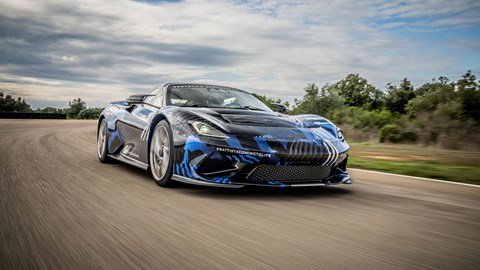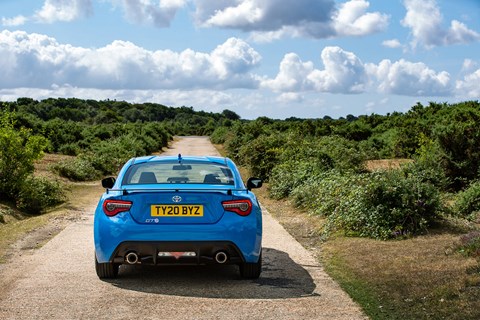► Walton patents the Car Sandwich Index
► A new kind of power-to-weight ratio
► Bring on simpler, lighter thrills
Let’s not even get into the debate about whether sandwiches should be cut into triangles or rectangles: personally I prefer triangles, but I don’t want to go down that rabbit hole right now – we simply don’t have the time.
Let’s focus instead on the most important factor in making a good sandwich: the bread-to-filling ratio. If you have two pieces of bread and an egg mayonnaise filling that’s the same thickness as a bread slice, your ratio is 2:1. If the filling is thinner – perhaps a delicate slice of ham with English mustard – you’d have something like a 4:1 sandwich ratio. Yummy. However, some people (mostly Americans) seem to think you need the same amount of filling as bread, giving you a ratio of 1:1. This is totally wrong. It’s like a hotel BLT sandwich that needs a cocktail stick through the middle to stop it toppling over. Hate that.
Even worse: US comedian Josh Gondelman caused a Twitterstorm back in 2019 when he posted a picture of his turkey, avocado and spinach sandwich with what looked like an entire Christmas lunch jammed into a bread roll. It made me want to gag just looking at it.
Of course, we’re talking about a universal law here, one that says ‘more doesn’t necessarily mean better’. And what’s true for sandwiches is also true for cars.
The horsepower race has spiralled out of control
So forget raw horsepower, the number that really counts is a car’s power-to-weight ratio, and like a sandwich this is delicately balanced. Take the new Pininfarina Battista (below), for example, the limited-edition electric supercar with a ludicrous near-1900bhp. This is the latest aggression in the stupid nuclear arms race currently going on between car manufacturers, and it’s ruining everything. Literally everything. The battery-powered Battista will probably be heavy, but even at 2000kg that would give the car something approaching 1000bhp per tonne – or a sandwich ratio of 1:1.

If the Battista does achieve 1000bhp per tonne, it won’t be the first: the 2014 Koenigsegg One:1 was actually named after its power-to-weight ratio. The 5.0-litre twin-turbocharged V8 put out 1360 metric horsepower (when it was run on high-octane rocket fuel) and the car weighed 1360kg, giving it 1000hp per tonne, or a ratio of 1:1.
This is too much: too much to use, too much to enjoy, too much for real-world roads. These kind of power outputs make it more like riding a firework than driving a car, and paradoxically this pursuit of more and more horsepower means the driver has less to exploit. Sure, you can light it up on a motorway, but the super-monster hypercars like the Koenigseggs and Bugattis can’t be driven hard – they can’t be wrestled or wrung out. You just spend your whole time holding back.
Back to basics: why less is more
I agree, it is a balance. At the other end of the scale to the Pininfarina Battista are cars like the Mazda MX-5 and Toyota GT86. I love the Toyota, it’s one of my favourite cars, weighing in at just 1240kg; but even a fan like me has to admit its 2.0-litre flat-four engine only coughs up a paltry 197bhp, which means a sandwich ratio of 6:1. This is way, way too much bread.

So where is the sweet spot? Like I say, what’s true of sandwiches is also true of cars.
The Ariel Atom 4 puts out 320bhp and weighs just 595kg, giving it a power-to-weight of 537bhp per tonne – a ratio of roughly two kilos to every horsepower, or two slices of bread to one egg mayonnaise filling; and sure enough the Atom is a car you can really rev out, drive hard and enjoy.
But I actually prefer to be even more minimal with my sandwiches. Like the Porsche Cayman, for example: 295bhp and an unladen weight of 1335kg, giving it a power-to-weight ratio of 221bhp per tonne. Or the lightweight aluminium Alpine A110, which has a very similar 224bhp per tonne. At around 4:1 these are sports cars you can truly exploit; cars that give you a sense of satisfaction. They are like streaky bacon, perfectly fried until golden and then sandwiched between two medium-thickness slices of fluffy white bread, lightly buttered and perhaps adorned with a thinly smeared dollop of ketchup.
More opinion pieces by Mark Walton